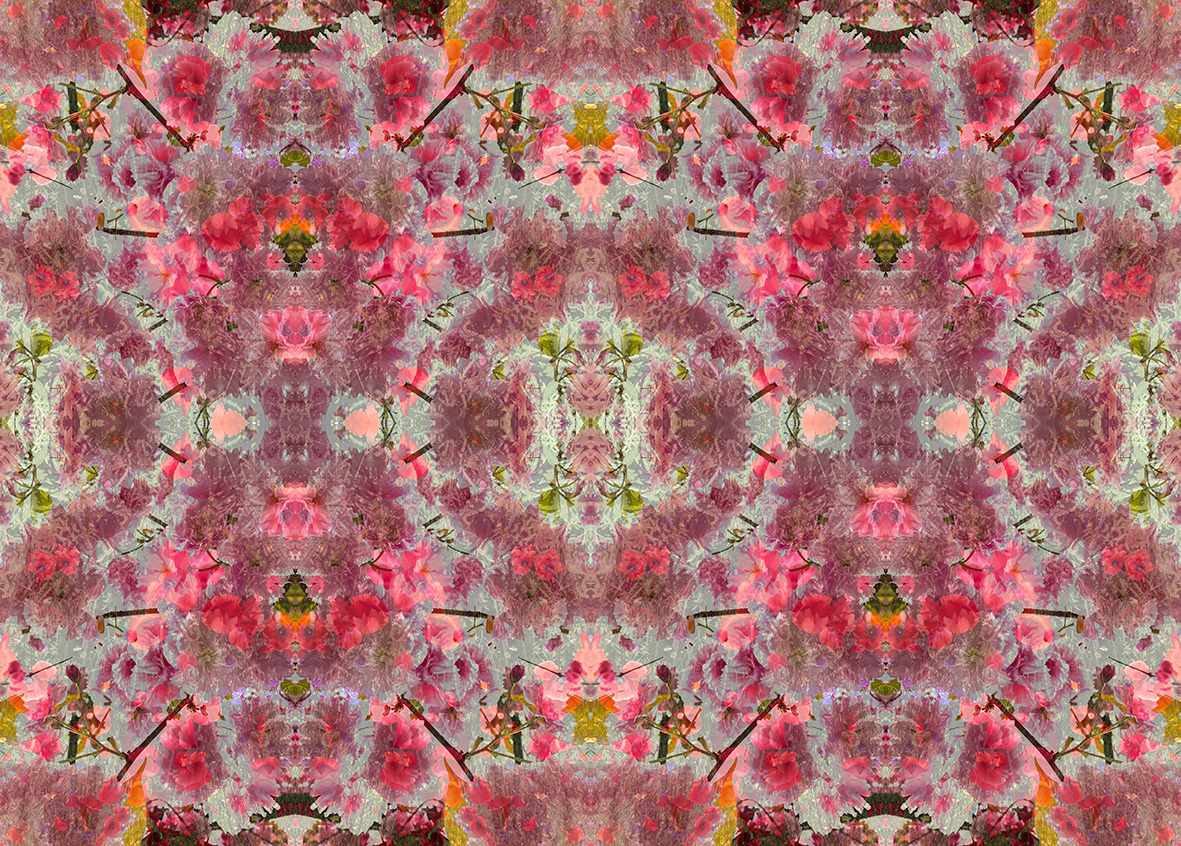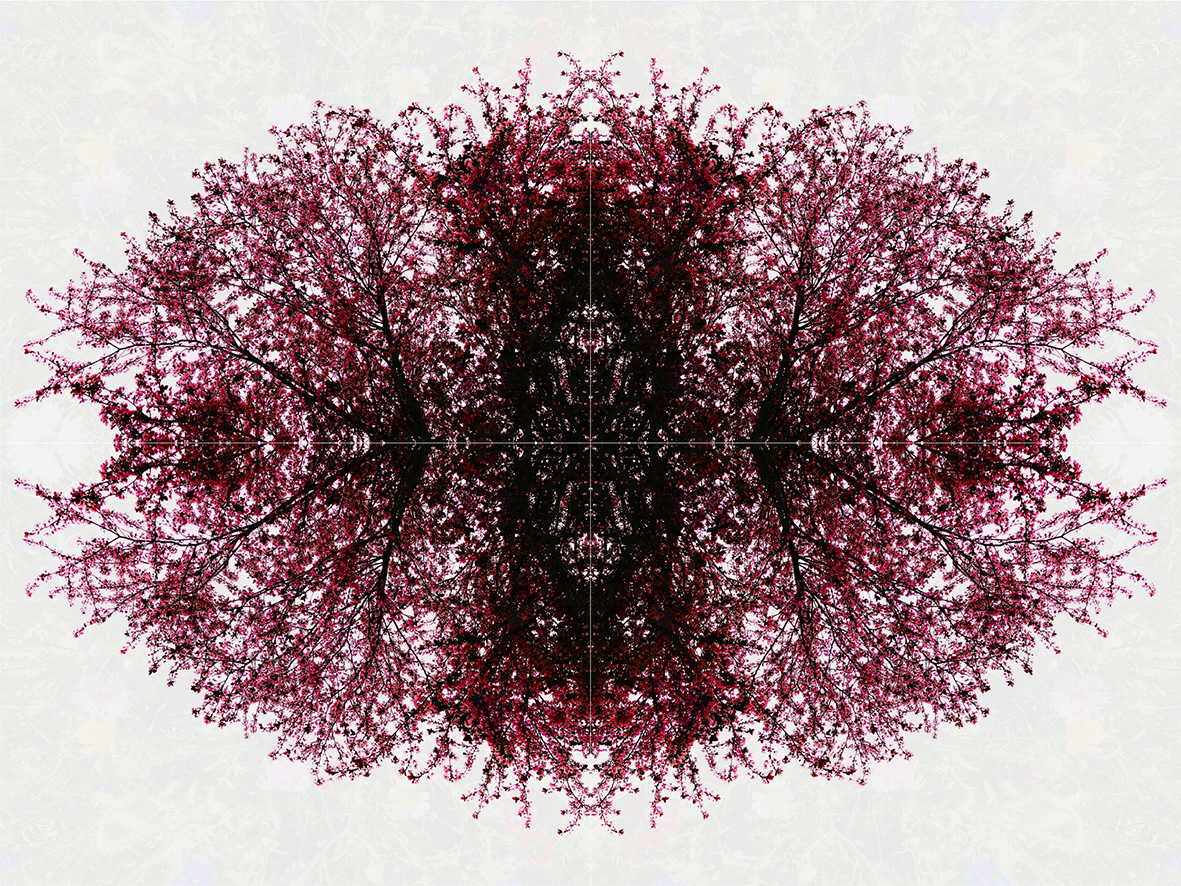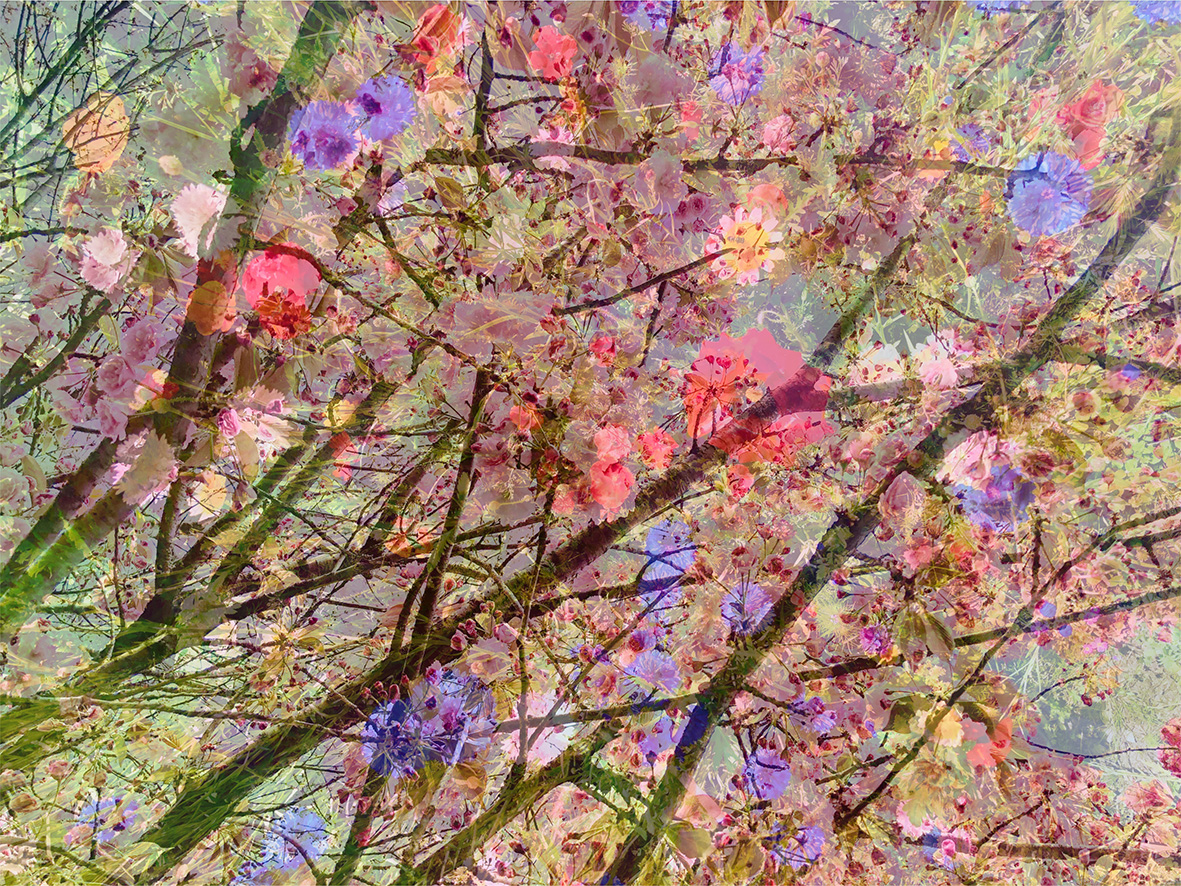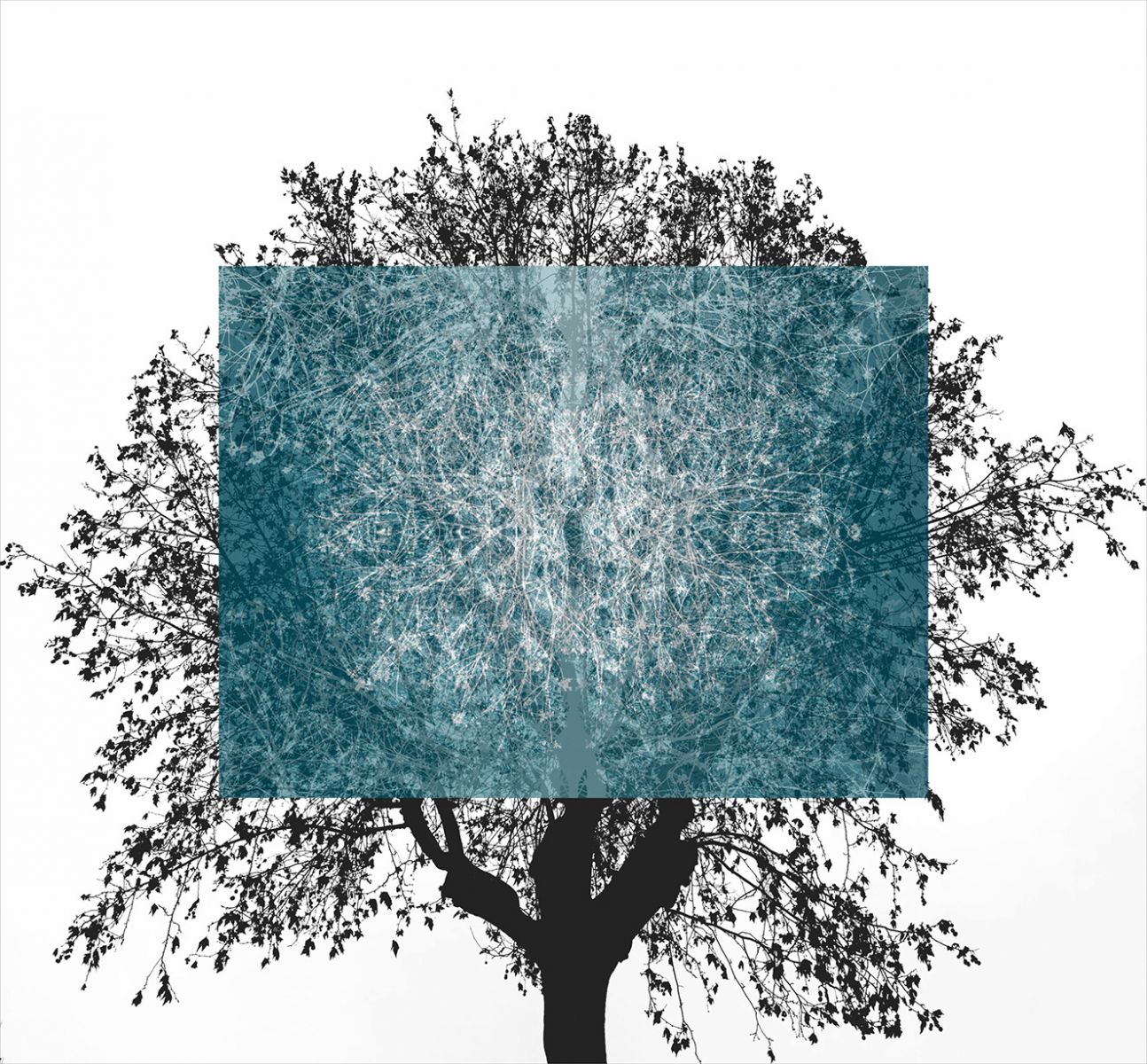esposizioni
di
Francesco Maria Bandini

"FOREVER SPRING" di Francesco Maria Bandini
Il senso dell'impossibilità consiste nel sottrarsi alla presenza delle condizioni favorevoli al cambiamento
Dal 30 maggio al 30 giugno 2023 - dal giovedì al sabato 15.30/19.30
Atelier Balderi
Archivio Iginio Balderi, via Ausonio 20 – Milano
archivio@iginiobalderi.org
@archivioiginiobalderi
Dal 30 maggio 2023 presso lo spazio espositivo Atelier Balderi dell' Archivio Iginio Balderi di Milano si apre la mostra di Francesco Maria Bandini intitolata "FOREVER SPRING" - Il senso dell'impossibilità consiste nel sottrarsi alla presenza delle condizioni favorevoli al cambiamento -
In esposizione una selezione di 15 opere quasi tutte di grande formato, prodotte di recente dall'artista.

"ESOTICO ACCESSIBILE DESIDERIO" - 2023 - cm 140x195
Francesco Maria Bandini, FOREVER SPRING
marciare – osservare – creare
testo di Alessandro Romanini
Quello che Francesco Maria Bandini realizza, non è la strutturazione di un processo estetico in tutte le sue componenti e un display atto a renderlo fruibile, ma bensì un’operazione molto più complessa ed articolata.
Innanzitutto il suo è un processo metalinguistico, che mira a riflettere, mettere in discussione e far evolvere rispettivamente, un metodo, le finalità e soprattutto i riflessi che le evoluzioni hanno sull’artista stesso come uomo e creativo.
In primis lo scopo è quello di indagare il ruolo dell’artista in questa specifica congiuntura storica ed esistenziale e la sua capacità di impattare sulla realtà in generale e su quella personale in maniera specifica.
Una strategia espressiva che mira a scuotere la percezione dal diffuso fenomeno che cristallizza i nostri sensi su un eterno presente dal punto di vista temporale e su uno spazio circoscritto autodefinito, allo stesso tempo rassicurante e limitante.
Non è un taumaturgo l’artista a cui pensa Bandini, ma è un individuo che intende restituire una verginità allo sguardo, rendendolo in grado di tornare a vedere oltre la mera superfice dell’esistente, per cogliere quelle potenzialità vitali e percettive.
Una strategia creativa che indaga l’esistente e il personale, riuscendo a unire la dimensione biografica, personale con quelle delle valenze universali negli esiti finali.
Quelle potenzialità, che la pervasiva pioggia di immagini destituite di fondamento comunicativo che ci bombarda ogni giorno hanno anestetizzato e incasellato in categorie precostituite che invocano una visione passiva.
L’artista romano, dalla formazione multidisciplinare (architettura, fashion design, design del prodotto, fotografia…) e dal vasto e approfondito sapere, crea delle opere fotografiche che sono in realtà dei veri e propri dispositivi – nell’accezione di Focault - , che “costringono” l’osservatore a una fruizione partecipativa, attiva, per dare vita a riflessioni e percorsi fruitivi ulteriori, ad alto tasso di soggettività.
Una sorta di invito per l’osservatore all’immedesimazione con l’artista, metodo Stanislavsij, con il suo processo, per ottenere come risultato una verginità dello sguardo.

"IN QUEL PRECISO MOMENTO" - 2023 - cm 160x213
La forma espressiva finemente progettata dall’artista, abbina etica ed estetica, volendo confliggere con quel sistema di produzione iconografica contemporaneo, che sforna immagini che non sollecitano la funzione scopica propria ad ogni singolo individuo.
Un’autodisciplina ferrea, un metodo progettato con cura porta Bandini a indagare la realtà urbana alla ricerca di quegli elementi interstiziali che sono deittici di una realtà ulteriore che sfugge all’osservazione e quindi al circuito percezione-riflessione-senso, rimanendo anonimi e improduttivi.
Una ricerca inesausta di quegli elementi, insignificanti a una prima visione di superfice, ma in realtà forieri di quella “eterna primavera”, che può risvegliarsi costantemente a condizione di essere attivata da uno sguardo consapevole delle potenzialità intrinseche in questa dimensione.
Bandini si inserisce in quella linea storicamente nobile di flâneur, che ha come pionieri e teorici, da Baudelaire a Walter Benjamin passando per Georg Simmel e trova poi nelle deambulazioni dei dadaisti e nell’indagine del rimosso urbano dei surrealisti, fino alla psicogeografia dei situazionisti e l’analisi nomade di gruppi come Stalker, le naturali evoluzioni storiche.
Dall’erranza paleolitica al nomadismo neolitico, da Dada al Surrealismo, dal Lettrismo all’Internazionale Situazionista, dal minimalismo alla land art, la storia dell’arte ha costruito una narrazione che si alimenta nel territorio del vagare, accompagnato dall’osservazione, raccontando allo stesso tempo l’evolversi della percezione del paesaggio e del reale in generale, in cerca di un’altrove possibile, vero o presunto.
Un altrove possibile in cui far pascolare un altro io verosimile e auspicato.
Nel processo creativo di Bandini, nell’indagare, individuare e ricombinare i segnali di una primavera costantemente in fieri, nascosta e schermata dal rimosso percettivo ospitato dalla dimensione urbana, si cela l’intenzione di indagare uno specchio, in cui l’artista stesso va alla scoperta di se stesso e la convinzione che lo spazio metropolitano possa essere attraversato come la nostra mente; il tutto sostenuto da una convinzione che nella città possa rivelarsi una realtà non visibile, interstiziale, frammentaria ed effimera, governata da regole e dinamiche altre rispetto a quelle del ritmo circadiano dell’esistenza.
La sua è una cine-visione, una visione nitida che non si può scindere dal movimento e di questo si alimenta, trasformando visioni in transito e in metamorfosi, in forme espressive ben definite e strutturate.
Come affermava Breton nel 1924, “La strada che io credevo capace di imprimere alla mia vita svolte sorprendenti, la strada, con le sue inquietudini ed i suoi sguardi, era il mio vero elemento: in essa ricevevo come in nessun altro luogo il vento dell’eventualità”.
L’eventualità e il caso sono sinonimo di opportunità nell’universo creativo di Bandini soprattutto sono gli elementi detonanti per scardinare le forme percettive incrostate dall’uso ordinario e precostituito e le forme interpretative pregiudiziali connesse; due veri e propri collaboratori e coautori dell’artista.
Bandini è cosciente che prima dell’invenzione dell’architettura, l’uomo possedeva una forma simbolica con cui modellava lo spazio: la dinamica del camminare e del vedere.
Ed è con il camminare e osservare che l’uomo ha cominciato a costruire il paesaggio naturale che lo circondava, dalle “vie dei canti” alle moderne megalopoli ed è sempre camminando che nell’ultimo secolo hanno preso vita le categorie con cui si interpretano i paesaggi urbani in cui viviamo.
Il metodo dell’artista, oscilla sapientemente fra desiderio di esattezza e rispetto per l’indeterminatezza; un’opera aperta è la finalità, che lasci spazio alle ulteriori interpretazioni e inferenze dello spettatore.
La transitorietà, la poesia del frammento che Bandini struttura nel suo percorso di osservazione, selezione e ricombinazione degli elementi, effettuato in versione dinamica, da Flâneur, beneficia anche dell’allineamento volontario ad un sistema ostruttivo di regole.
La resistenza che la realtà con le sue varie declinazioni fenomenologiche oppone alla visione e alla classificazione e soprattutto alla sua rappresentazione e il paradigma di regole etico-estetiche che l’artista si pone.
Un percorso disseminato in maniera premeditata di ostacoli, che ricorda da vicino le strategie metalinguistiche messe in atto dal regista Lars von Trier nel suo lungometraggio “Five Obstructions” (2003), variazione sul tema e sviluppo del film del suo amico e collega Jorge Leth, “The perfect Human” (1967).
Un set di regole ferree finalizzate a rompere le procedure della narrazione visiva precostituita.
In questo contesto le immagini acquistano lo statuto di “eventi reali”, come profetizzava Guy Debord nel suo “La Societè du Spectacle”: “La dove il mondo reale si cambia in semplici immagini, le semplici immagini divengono degli esseri reali”.
L’artista, grazie alle sue conoscenze nell’ambito architettonico e del design, ha infatti strutturato una dimensione mitopoietica personale e soprattutto ha articolato una specifica sintassi significante dello spazio, che si traduce sia nella disposizione delle opere che soprattutto nel loro darsi a vedere.
Costruisce dispositivi, “strutture aperte” nell’accezione di Umberto Eco, che contengono un paradigma vastissimo di possibilità interpretative in cui lo spettatore può avventurarsi per creare un proprio profilo narrativo, interpretativo e percettivo.
Light Box, che impostano una visione “guidata” per l’osservatore, distogliendolo dalla precostituita visione prospettica “centralizzata” dei massmedia e invitandolo a un’”illuminazione” fruitiva, faticosa ma premiante.
Una ricerca dello stupore continua e inesausta.
La capacità di Bandini di progettare e operare in una dimensione multidisciplinare, affrancandosi dai limiti delle categorie disciplinari espressive e da quelle classificatorie del mercato e del marketing dell’arte contemporanea abbinata alla volontà di affrancamento dalle istanze decorative, producono degli strumenti di depurazione visuale e di strutturazione di forme alternative di pensiero.

"NAUFRAGAR M'E' DOLCE" - 2023 - cm 88x74
Le singole opere, sono frutto di una selezione di elementi botanici – simbolici di una nuova eterna primavera – rami, infiorescenze ecc…che diventano pretesti per la costruzione di apparati espressivi.
In questi elementi botanici Bandini, in un’ottica cezaniana ha la capacità di vederne le potenzialità espressive, compositive, geometriche, che verranno espresse attraverso una sapiente capacità combinatoria e di modellazione.
L’artista, in questa sua inesausta osservazione errante, continua ad alimentare la sua ricerca esistenziale e artistica e a nutrire senza sosta la funzione scopica degli osservatori, elemento inscindibile dalla natura umana e dalla costruzione d’identità.
Alessandro Romanini
"FOREVER SPRING"
Nella nostra esistenza dobbiamo spesso confrontarci con il senso dell’impossibilità, della costrizione e della limitazione soprattutto nell’ipotesi di un cambiamento importante. A volte subiamo eventi esterni (e pazienza: possiamo solo resistere) ma più spesso siamo noi a crearci queste condizioni costrittive tracciandoci attorno quei confini entro i quali ci ritroviamo ad interpretare il senso dell’ esistenza. Familiarizziamo con questi elementi di separazione dando loro un senso, a volte protettivo, per preservarci dal contesto.
Escludiamo invece la parte fondamentale del nostro vissuto che consiste nella curiosità, nella libertà espressiva, nella possibilità di una crescita emotiva, mettendoci in discussione nell’affrontare noi stessi e l’ignoto. Oltre questa incognita nasce uno stato emotivo nuovo: plasmato nella possibilità, nel rinnovamento, nella leggerezza. E’ nel momento in cui questi elementi diventano oppressivi che si creano le condizioni favorevoli al cambiamento e ci si focalizza in una nuova consapevolezza provando ad andare oltre. Da qui ha origine il mio progetto.
Iniziando a cercare una lettura più critica di questi elementi divisivi dandogli una rilevanza diversa; alle ricerca di una crepa, una fessura, un punto debole che ci consente di traguardarli, consapevoli della loro fragilità per affrontarli e con la volontà per farlo. Qui ritroviamo noi stessi e le coordinate geografiche della nostra presenza nel pieno contesto dell’esistenza. Eccoci nuovamente con la prospettiva davanti e l’orizzonte più ampio, sul palcoscenico di un nuovo territorio emotivo : «FOREVER SPRING».
Francesco Maria Bandini

"SUPERCONCETTUALISTICHESPIRALITOSO" - 2023 - cm 80x86
Francesco Maria Bandini (1965)
Designer e architetto, inizia la sua attività professionle a Roma durante gli studi di architettura, come stilista presso l’atelier di alta moda di sua madre Alba Armillei, esperienza che gli vale l’acquisizione di alcune sue opere sartoriali presso le collezioni permanenti del Metropolitan Museum of Art di New York e del Gemeente Museum de L’Aia.
Nel 1996 si trasferisce a Milano, fondando il “B3 Designstudio”, successivamente denominato “Francesco Maria Bandini Emotional Design”. In più di venti anni di intensa attività collabora con numerose aziende nazionali e internazionali in diversi ambiti di progetto (product e brand design, retail, art direction, stile), ottenendo importanti riconoscimenti:
- Selezione Compasso d’Oro ADI - pubblicazione sull’ ADI Design Index - 2006 - Tre volte vincitore, in differenti categorie, del P.O.P. Award (Punti vendita e servizi) - 2006/2007 - Vincitore Italian Advertising Award - 2005/2006 - Vincitore Young & Design Award Fiera Milano - 2001
Parallelamente all’attività di progettazione e consulenza, Francesco ha sempre attinto dalla libertà espressiva dell’arte anche per la realizzazione di opere installative il cui obiettivo costante è stata la condivisione emotiva del progetto, del luogo, del prodotto. Sue installazioni sono state esposte presso il Museo della Triennale di Milano nel corso della Milano Design Week 2011e 2012.
Negli ultimi anni Francesco si è dedicato ad una ricerca assidua intorno a concetti riguardanti la “Persona” cui egli attribuisce forte rilevanza comunicativa: l’io, l’inconscio, il sociale.